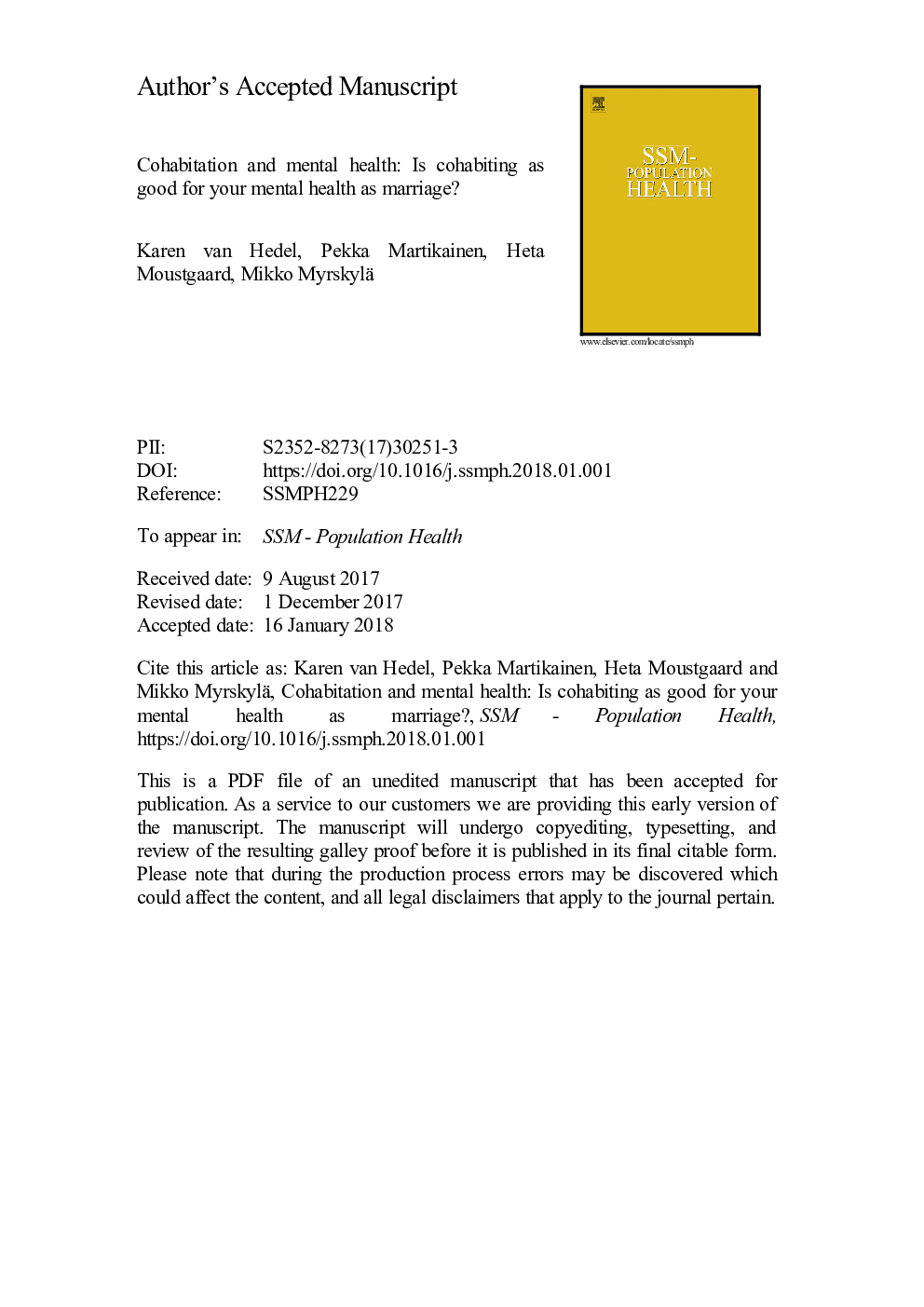| کد مقاله | کد نشریه | سال انتشار | مقاله انگلیسی | نسخه تمام متن |
|---|---|---|---|---|
| 7528184 | 1487258 | 2018 | 26 صفحه PDF | دانلود رایگان |
عنوان انگلیسی مقاله ISI
Cohabitation and mental health: Is psychotropic medication use more common in cohabitation than marriage?
ترجمه فارسی عنوان
زندگی مشترک و سلامت روانی: آیا مصرف داروهای روانگردان بیشتر از ازدواج در زندگی مشترک است؟
دانلود مقاله + سفارش ترجمه
دانلود مقاله ISI انگلیسی
رایگان برای ایرانیان
کلمات کلیدی
زندگی مشترک، فنلاند، ترتیب زندگی، وضعیت زناشویی، سلامت روان، استفاده از داروهای روانگردان،
موضوعات مرتبط
علوم انسانی و اجتماعی
علوم اجتماعی
سلامتی
چکیده انگلیسی
Marriage is associated with better mental health. While research on the mental health of cohabiting individuals has increased in recent years, it has yielded mixed results thus far. We assessed whether the mental health of cohabiters is comparable to that of married individuals or those living alone using longitudinal data on psychotropic medication purchases. Panel data from an 11% random sample of the population residing in Finland for the years 1995 to 2007, with annual measurements of all covariates, were used. Ordinary least squares (OLS) models were applied to disentangle the relation between cohabitation and psychotropic medication purchases while controlling for relevant time-varying factors (age, education, economic activity, and number of children), and individual fixed effects (FE) models to further account for unobserved time-invariant individual factors. Our sample consisted of 63,077 men and 61,101 women aged 25 to 39 years in 1995. Descriptive results and the OLS model indicated that the likelihood of purchasing psychotropic medication was lowest for married individuals, higher for cohabiters, and highest for individuals living alone. This difference between cohabiting and married individuals disappeared after controlling for time-varying covariates (percent difference [% diff] for men: 0.3, 95% confidence interval [CI]: -0.0, 0.6; % diff for women: -0.2, 95% CI: -0.6, 0.2). Further controlling for unobserved confounders in the FE models did not change this non-significant difference between cohabiting and married individuals. The excess purchases of psychotropic medication among individuals living alone compared to those cohabiting decreased to 1.2 (95% CI: 1.0, 1.4) and 1.4 (95% CI: 1.1, 1.6) percentage-points in the fully-adjusted FE model for men and women, respectively. Similar results were found for all subcategories of psychotropic medication. In summary, these findings suggested that the mental health difference between cohabiting and married individuals, but not the difference between cohabiting individuals and those living alone, was largely due to selection.
ناشر
Database: Elsevier - ScienceDirect (ساینس دایرکت)
Journal: SSM - Population Health - Volume 4, April 2018, Pages 244-253
Journal: SSM - Population Health - Volume 4, April 2018, Pages 244-253
نویسندگان
Karen van Hedel, Pekka Martikainen, Heta Moustgaard, Mikko Myrskylä,
